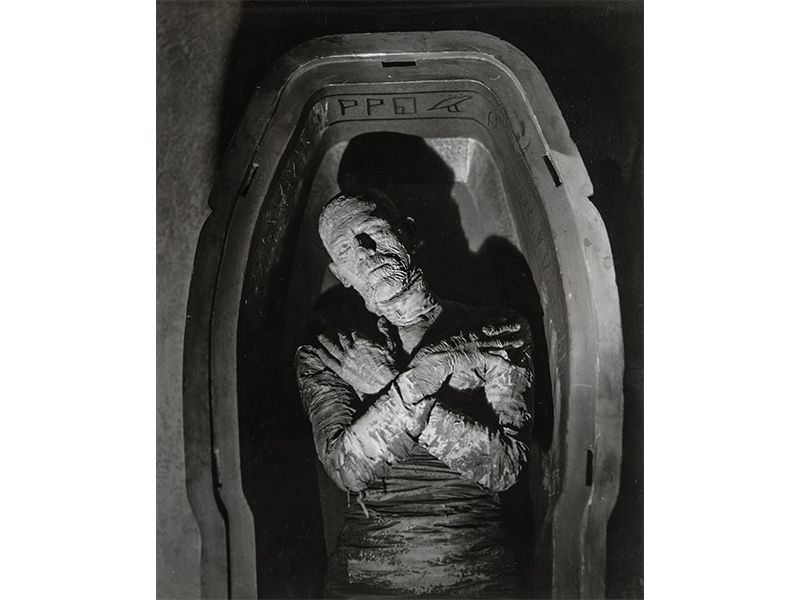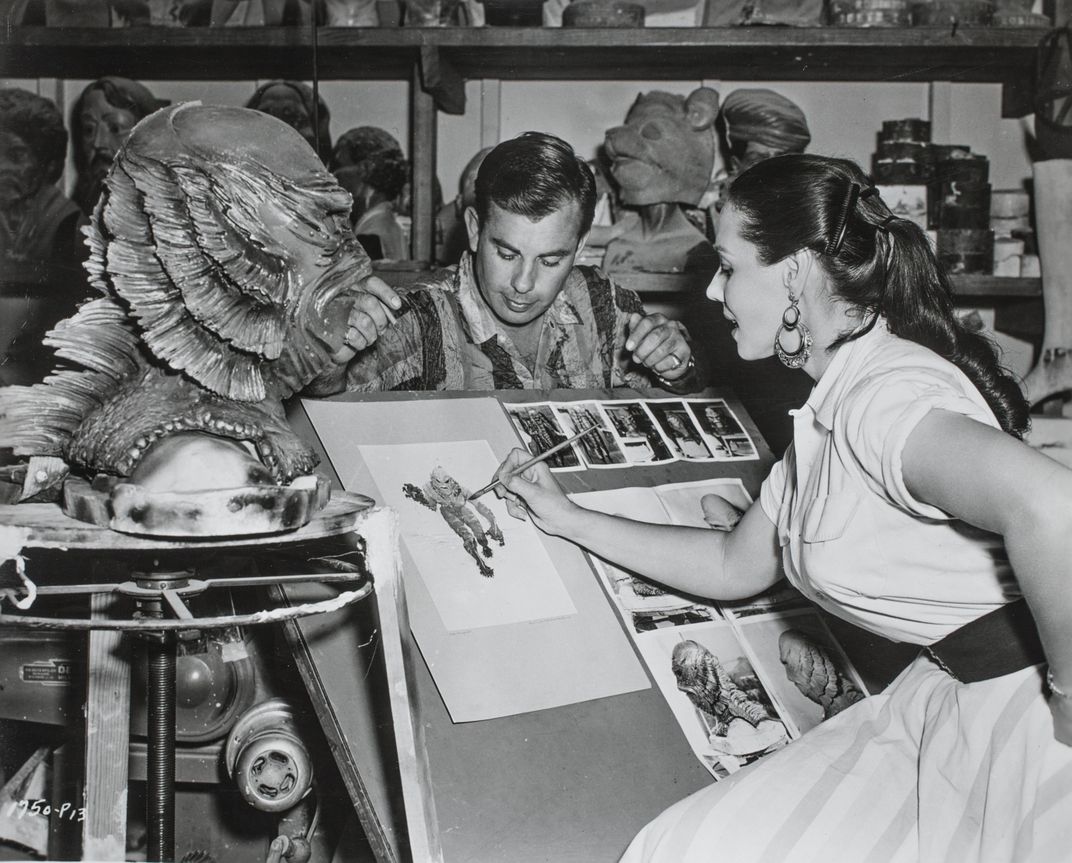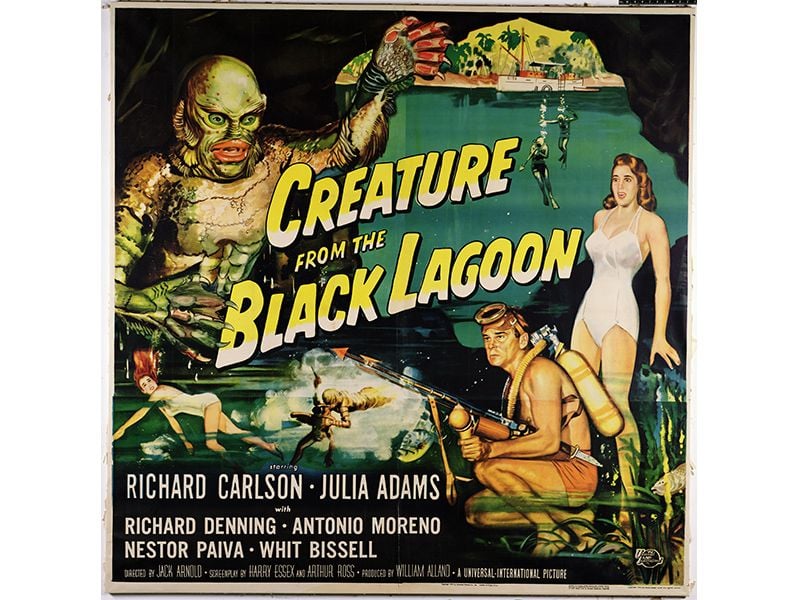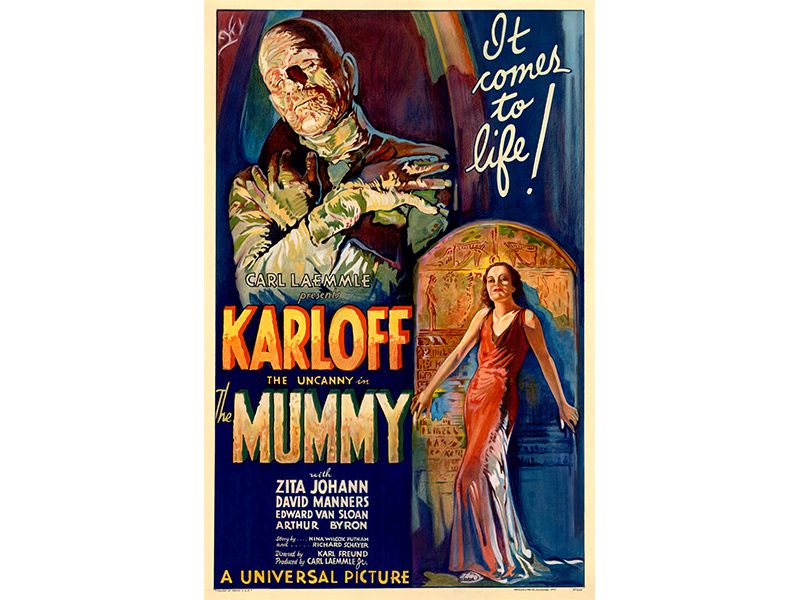The Science Behind Hollywood’s Movie Monsters
Massive hits at the time, the films that brought Frankenstein, Dracula, the Mummy and more to life also tapped into societal fears and traumas
:focal(1237x2562:1238x2563)/https://tf-cmsv2-smithsonianmag-media.s3.amazonaws.com/filer/ad/a1/ada12637-ef28-4d02-80c5-7d6790e7fb22/5_a_film_still_showing_dr_frankensteins_laboratory_in_the_1931_film_courtesy_of_universal_studios_licensing_llc.jpg)
In a memorable scene from the 1931 horror classic Frankenstein, Dr. Frankenstein stands over his sentient monster, a beast he created from the body parts of exhumed corpses. It is, of course, a dark and stormy night; the requisite flashes of lightning and thunder heighten the melodrama. Metal contraptions hiss electricity and spew flames as the mad scientist toils away in his cavernous laboratory, trying to animate the monster using electrical currents. Suddenly, Frankenstein’s creature, previously lifeless on the gurney, moves its long, bony fingers, then raises an arm. “It’s alive! It’s alive! It’s alive!” shrieks the doctor.
The Universal Pictures film, an adaptation of Mary Shelley’s 1818 horror novel Frankenstein; or, The Modern Prometheus, starring Boris Karloff as the monster, was a box office hit, igniting the public’s appetite for cinematic horror and paving the way for Universal to release a string of iconic monster movies for years to come, including The Mummy, Dracula and Creature From the Black Lagoon.
Whether these classic monsters sprung from a swamp, Egyptian sarcophagus or, like Frankenstein, a bag of body parts cobbled together for an experiment gone awry, they were all rooted in the public’s fascination with (and sometimes fear of) science. Though the monsters’ look was the creative handiwork of Universal’s team of costume designers, makeup artists and set designers, the public’s scientific understanding (however limited it may have been) of amphibians, mummies, and anatomy fed into the horror.
“Without real science, these monsters would not have been as terrifying as they were,” says Beth Werling, collections manager, history, for the Natural History Museum of Los Angeles County, where a new exhibition “Natural History of Horror” explores the scientific inspiration behind cinema’s most popular movie monsters. “To one degree or another, all of these monsters had scientific origins.” While Werling cautions that it’s unlikely Universal undertook a concerted effort to bring actual science into the movies, “it is clear that they were certainly looking at images of King Tut's tomb for copying props and set design as well as some real scientific instruments for Frankenstein's lab.”
Shelley, who was only 18 when she wrote Frankenstein while on a summer vacation on Lake Geneva, was fascinated by science. She often attended lectures to stay abreast of new developments and research, and was especially interested in the nascent field of electrophysiology— called “animal electricity”— which studied the effects of electricity on animal tissue. She found followed the work of Luigi Galvani, an 18th-century scientist whose early experiments proved that an electrical charge could make a dead frog's legs twitch, and used his studies as fodder for Doctor Frankenstein.
During the same period, scientists also began learning about the nature of resuscitation, and how people who seemed to have drowned could sometimes be brought back to life by forcing air into their windpipe and performing abdominal compressions. Early experiments, which involved drowning and dissecting animals, yielded valuable insights into the relationship between respiration and physiology. Shelley, whose own mother had been resuscitated after jumping off the Putney Bridge into London’s Thames River in a suicide attempt two years before her daughter’s birth, was especially captivated by this research.

More than a century after Shelley found inspiration from real science, Universal translated her novel into the Frankenstein movie, and then followed-up with yet another tale of a life temporarily suspended and then revived: the 1932 classic The Mummy. Starring Boris Karloff (again) as the mummified high priest Imhotep, the movie tells the story of a soul buried alive as a punishment and inadvertently brought back to life through a magic scroll.
In 1922, British archaeologist Howard Carter and his team famously opened King Tutankhamun’s tomb, which had been untouched for more than 3,000 years. The event captured the imagination of millions of people around the world and ignited a global fascination with ancient Egypt. A decade later, when The Mummy was released, the interest still raged.
“The public was obsessed with King Tut, so they were primed in their consciousness about Egyptian curses when the movie came along,” says Sarah Crawford, senior manager of exhibition design and development for the museum. “The film took some liberties and tweaked the science a bit. For example, it doesn’t show the extensive embalming processes Egyptians used to bury their dead. But it was inspired by the real science. All these films brought science to the forefront through their visual interpretation of the time period.”
“Monsters are always a mixture of plausible fears and unconscious fears,” says Leo Braudy, author of Haunted: On Ghosts, Witches, Vampires, Zombies and Other Monsters of the Natural and Supernatural Worlds. “Monster films, and horror as a genre in particular, derive from and help shape more unconscious and inchoate fears in its audience.”
Fear of the vampire’s bite, for example, came through in the 1931 film Dracula, based on Bram Stoker’s 1897 gothic horror novel and the 1924 play Dracula by Hamilton Deane and John L. Balderston. Vampire legends existed for centuries before Stoker published his novel, but scientists believe that deadly epidemics of cholera and tuberculosis in the mid-1800s may have popularized the myths and inspired reports of vampire bites.
“The vampire became the explanation when they didn’t have the science,” Crawford says. “If someone had tuberculosis and it spread to other family members, they blamed vampires rather than bacteria. It was a way to explain the natural processes and fed into the monster narratives.”
For Creature From the Black Lagoon, released in 1954, designer Milicent Patrick extensively researched sea life and prehistorical animals to shape her vision for “Gill-Man,” also known as the Creature. Patrick pored over scientific illustrations of reptiles and amphibians that lived on Earth 400 million years ago. Inspiration for the Creature also came from the film’s director, who heard about the extinct coelacanth—a fish believed to be the ancestor of land animals with unusual limb-like fins that could have helped it crawl from the ocean onto solid ground. Links between land and sea animals, coupled with a myth one of the producers had heard at a dinner party about a half-man, half-fish creature who lived in the Amazon River, made their way into Patrick’s physical characterization of Gill-Man.

Science not only inspired the characters on screen, but also led to real experimentation and invention in the more technical areas of moviemaking. In the creation scene in Frankenstein’s laboratory, set designer Kenneth Strickfaden, who had experience as an electrician, devised techniques for simulating lightning and electricity. It took artist Jack Pierce, who was head of Universal’s makeup department and credited with creating many of the looks in Universal’s stable of monsters, eight hours to apply Karloff’s makeup for The Mummy—a lengthy procedure that entailed applying layers of a clay mixture called “fuller’s earth,” cotton soaked in the chemical collodion, and 150 feet of bandages.
Ultimately, the science behind Hollywood’s iconic monsters made the films of this golden age of horror even more terrifying. Intellectually, moviegoers knew that the creatures they watched on the big screen weren’t real. But scientific underpinnings, whether the accurate depiction of an amphibian that actually roamed the world millions of years ago or the resuscitation techniques that could bring someone, or something, back to life, triggered an unsettling anxiety and forced people to consider: Could this really happen?
“The potential for catharsis in watching a monster movie, the feeling that all is finally right with the world, comes less from the defeat of the monster than from the tying up of the plot of the movie,” Braudy says. “More than any other film form, the horror movie generates sequels. Why? Because the monster, which in a sense comes from inside us as much from outside, can never finally be defeated.

/https://tf-cmsv2-smithsonianmag-media.s3.amazonaws.com/filer/fa/21/fa2188cc-b80f-4293-b798-ceb65282058b/frankenstein-poster.jpg)
